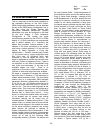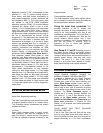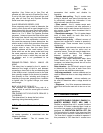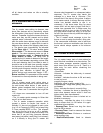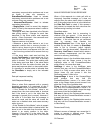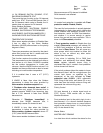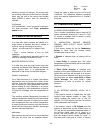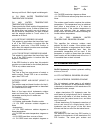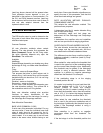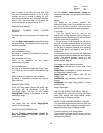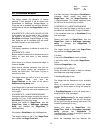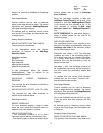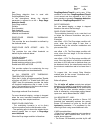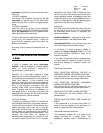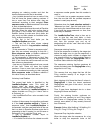
Date: 8-4-2010
Revision: 0
Form: 2396
algorithms are used. Additionally:
4.7.7 RATE ADJUSTMENT
When the Slave dropout/return compensation
parameter specifies a rate adjustment and a rate
compensation event occurs (a slave leaves
while firing, or a slave returns) then rate
adjustment will alter the integrator value so that
the commanded rate compensates for the added
or lost capacity.
INTEGRATOR COMPENSATION
A stand-alone Sola includes a feature to smooth
the response when a rate override has occurred
(such as delta-T rate limit) causing the PID
output to be ignored.
Whenever an override has occurred then, at the
moment the override ends, the integrator is
loaded with a value that causes the PID output
to match the current rate, whenever this is
possible within the integrator’s limits. The Lead
Lag PID will implement similar behavior: The
rate allocator will provide a trigger that causes
the integrator's value to be recomputed and this
trigger will activate whenever a rate allocation
limit is released; that is, this event will occur any
time the system transitions from the condition in
which it is not free to increase the total
modulation rate, to the condition where this rate
may increase.
4.7.8 IMPLEMENTATION
The examples below are ways in which this may
occur, but in implementation what is necessary,
first of all, is to use a rate allocator that assigns
rate to each slave and can detect when all of the
assigned rate is absorbed, or if there is excess
requested rate that the firing stages could not
absorb.
Then:
Whenever the system is rate limited, that is,
when A) all firing stages are commanded to their
respective maximums and also B) the PID is
asking for more heat than that, note that this has
occurred by setting a flag and also record total
rate that the system absorbed (the total of the
commanded maximums, not the PID's requested
rate which might include excess).
Whenever the rate allocator completes an
execution pass and detects that both conditions
of step 1 are no longer true (demand has
decreased) then it clears the flag.
Whenever the rate allocator completes an
execution pass and detects both conditions of
step 1 are true, and it also detects that the total
rate potentially absorbed by the system (the
commands have not yet been sent) has
increased from the value that was saved when
the flag was set, then it re-computes the
integrator value based on the old commanded
maximum, clears the flag, and actually allocates
the old rate that was saved when the flag was
set.
Examples include:
• The rate allocator has encountered a limit such
as base load (for a "limited" rate allocation
scheme) and this limit is released.
• All stages are at their maximum (base load, or
max modulation) and one or more stages are
rate-limited (such as due to slow-start or
stepped modulation limiting due to high stack
temperature, etc.) and the rate limited stage
recovers, changing from rate-limited to free to
modulate.
(This is indicated by the Slave Status "slave is
modulating": the changing from false to true is
not, itself, a trigger, but while it is true the rate
allocator can assign to the slave only the firing
rate that it is reporting; thus the release of this
might allow more rate to be absorbed by the
system. It also might not do this, if for example
the slave was in anticondensation and thus the
rate limit was maximum modulation rate.)
• All firing stages are at their maximum (base
load, or max modulation) and a stage which was
OnLeave returns in the firing state and is
available for modulation.
• An add-stage is in-progress and all firing
burners are at their limits (max modulation rate
or base load) and then the new stage becomes
available.
This also applies when the system is first
starting up, that is, all firing burners are at their
limits (zero) because non are firing, and thus
when the add-stage is finished the system
transitions from no modulation at all, to
modulating the first stage.
Lead Lag Burner Demand
67



